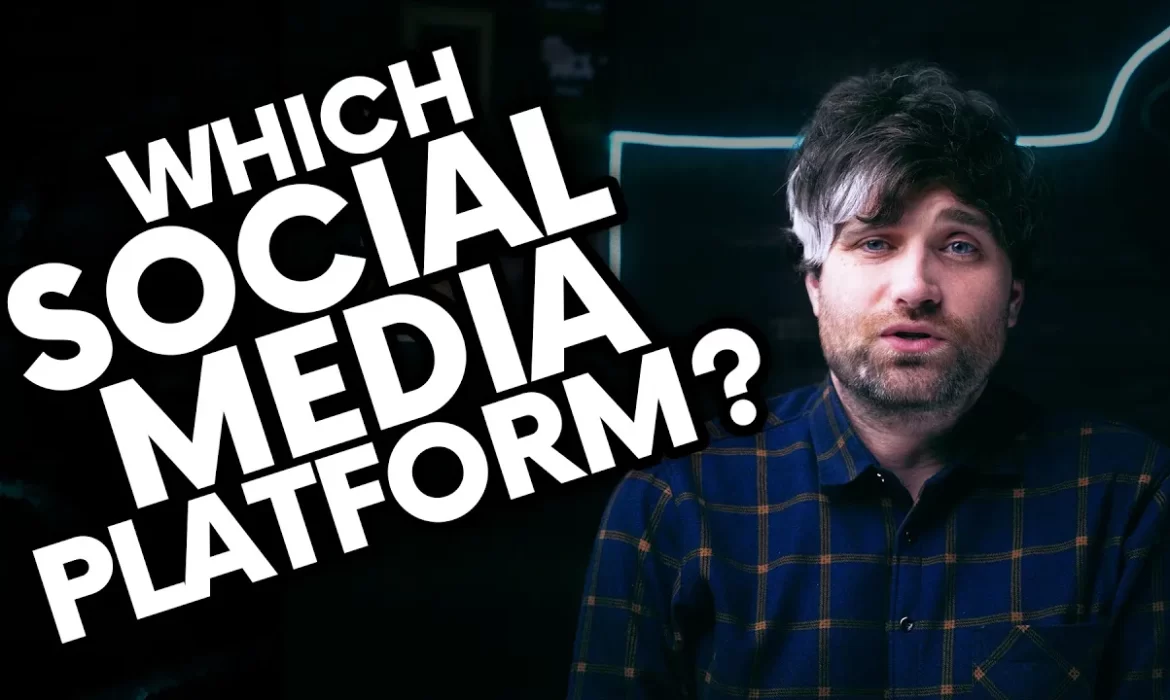
Choosing the right social media platform is one of the most common questions business owners face. With so many options and conflicting advice out there, it’s easy to feel overwhelmed. But you don’t need to be on every platform. You just need to be on the right one for your audience, industry, and goals.
This guide breaks it all down with real examples to help you make smart, strategic choices about where to focus your time and content.
Why Your Platform Choice Matters
Not all platforms serve the same purpose. What works for a bakery might not work for a consulting firm. The right social media platform should align with your audience’s habits and expectations and match your style of content. Posting the right message in the wrong place is one of the easiest ways to waste effort.
LinkedIn: Best for Professional Services
If you’re in professional services, LinkedIn is the platform to prioritize. It’s where decision-makers spend time, network, and look for insights. This is ideal for:
- Consultants
- Accountants
- Lawyers
- Engineers
- Business service providers
Use LinkedIn to build authority by posting client success stories, industry insights, and thought leadership. Don’t just post and leave. Comment on others’ posts, ask questions, and engage. Visibility on LinkedIn comes from consistent interaction.
Example: A financial planner sharing weekly tax-saving tips builds credibility and trust with their target audience.
YouTube: A Searchable Library of Value
YouTube is more than a video platform. It’s the second-largest search engine in the world. That makes it incredibly valuable for service-based businesses wanting to educate, inform, or explain.
Use YouTube to post:
- How-to videos
- Behind-the-scenes walkthroughs
- Educational deep dives
Consistency is key. Build your channel over time with regular uploads and search-optimized titles and descriptions.
Example: A construction company creates a video walkthrough of a heritage building retrofit. It becomes a useful tool for prospects who want to understand their process and capabilities.
Instagram: Best for Visual and Product-Based Brands
If your business is product-heavy or highly visual, Instagram is a strong choice. It’s designed for emotional connection and aesthetic appeal. Use Stories and Reels to highlight:
- Product creation and packaging
- Customer reactions
- Behind-the-scenes moments
- Before-and-after shots
Show the human side of your business. Content doesn’t need to be polished, but it does need to feel authentic.
Example: A bakery posts Reels of staff decorating cakes or time-lapse videos of bread baking. This behind-the-scenes content builds loyalty and community.
TikTok: High Energy and Trend Driven
TikTok is ideal for businesses that can move fast and embrace creativity. It thrives on trends, personality, and short-form content. It’s a great place to connect with a younger audience or show off the playful side of your brand.
Ideas for TikTok content:
- Short tutorials or demos
- Customer reactions
- Quick wins or tips
- Participating in trending challenges
Example: A home cleaning service posts fast-paced “satisfying” cleaning clips. They attract views and leads by showcasing real results in a fun, engaging way.
Facebook: Local and Community Based
While Facebook isn’t as dominant as it once was, it still holds value for local and community-based businesses. Use it for:
- Posting in Facebook groups
- Running local ads
- Selling via Facebook Marketplace
- Sharing updates to your followers
Example: A furniture maker lists products on Marketplace while offering tips in local DIY and home improvement groups.
The Key Is Platform Fit
The platform does not matter if your content doesn’t fit. LinkedIn users don’t want dancing trends. YouTube users don’t want one-liners with no substance. Your content must match the expectations of the people using the platform.
Example: A Calgary recruitment agency was torn between LinkedIn and Instagram. After reviewing where their clients and jobseekers spent time, they focused on LinkedIn. Within three months, their engagement tripled and they started attracting higher-quality candidates.
Keep It Consistent
No matter what platform you choose, consistency is essential. Social media growth doesn’t happen in one post. It’s a long game. Set a schedule you can stick to, whether that’s once a week or twice a month. Your audience will come to trust and expect your content.
Your Next Step
Start by looking at your competitors. Where are they posting? What’s working? What isn’t? Use those insights to shape your own strategy. You don’t need to copy them. You just need to learn from what they’re doing well.
Final Takeaway
Choosing the best social media platform for your business is about understanding your audience, your industry, and your goals. If you’re a service-based business, LinkedIn and YouTube are smart, strategic places to start. If you sell products, Instagram and TikTok can help bring your brand to life. And if you’re local, Facebook might still have a role to play.
Most importantly, make your content fit the platform and stay consistent. You don’t need to be everywhere, just in the right place with the right message.
✅ Grow Your Online Presence and Boost Conversions in 90 Days! https://www.thumbmuffin.ca/newsletter/
✅ Increase Your Sales and Revenue Today! https://www.thumbmuffin.ca/contact_us/



